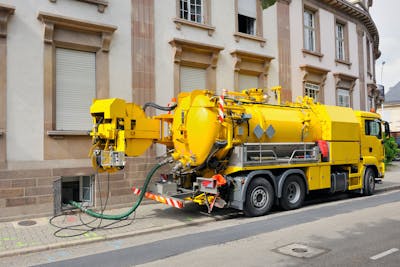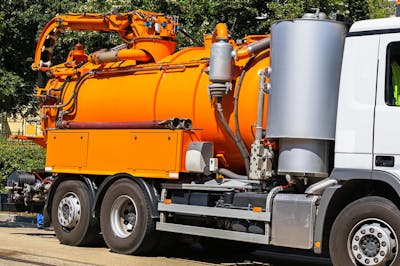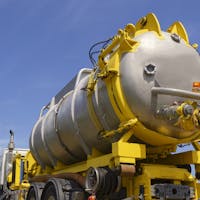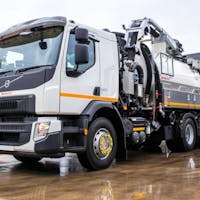Find the Best Non-Destructive Digging Services Near You
- Post a job
- Receive multiple quotes
- Choose your preferred Non-Destructive Digging services
Where do you need Non Destructive Digging?
Describe your job and our suppliers will send you quotes
771 Non-Destructive Digging Contractors for Hire on iseekplant
There's no shortage of skilled contractors in the non-destructive digging (NDD) space, and we've got 771 of them listed right here on iseekplant. If you're in the hunt for a solid professional to get the job done without causing damage to existing structures, this is the place.
The best part? With such a wide array of contractors, you're almost certain to find one near you, no matter where you are in Australia. Whether you're looking for hydro excavation or vacuum excavation services, we can connect you with the right supplier.
In this guide, let's look at non-destructive digging hire rates, equipment key to NDD, its civil and commercial applications and the utility companies to contact to ensure you don't hit a service during digging.
Non-Destructive Digging Rates Guide
Non-destructive digging (NDD) is a precise method used to excavate without causing harm to existing utilities or structures. While NDD boasts numerous benefits, including safety and efficiency, it's essential to understand its cost structure.
The rates for NDD services vary, usually influenced by the equipment's size, the project's location and its complexity. The table below is a breakdown to give you a clearer idea:
| Equipment Size | Wet Hire Rate (per day) | Dry Hire Rate (per day) |
|---|---|---|
| Compact Unit | $250 - $500 | $150 - $400 |
| Standard Unit | $500 - $1,000 | $400 - $750 |
| Industrial Unit | $1,000 - $3,000 | $750 - $2,500 |
Note: Rates vary depending on the machine's age, brand and location within Australia. All prices listed on this page are estimates, exclude GST and are in AUD.
Additional Costs to Consider When Hiring for Non-Destructive Digging
Hiring equipment is just one part of the cost puzzle. There are a few more pieces to slot in to get a full picture. Here are some of the other costs you might come across:
| Additional Costs | Estimated Cost |
|---|---|
| Site Inspection Fees | $100 - $500 |
| Utility Marking Services | $50 - $200 |
| Disposal Fees | $100 - $500 |
| Permit Fees | $50 - $150 |
When considering these rates, remember to match the size and capability of the NDD equipment to your specific project needs. For more accurate and customised quotes, use our Get a Quote tool to connect with our network of suppliers now!
Equipment Used in the Non-Destructive Digging Process
Non-destructive digging might appear like a simple process on the surface, but it requires a range of specialised gear to pull it off correctly. From powerful vacuums to water jetters, the equipment plays a big part in ensuring that digging gets done without damaging the surroundings.
Knowing your tools can streamline your project and keep things safe. Here's a quick overview of what each piece of equipment does:
- Vacuum Excavator: A machine that combines pressurised water or air with a high-flow vacuum system to excavate soil. Ideal for safe, precise excavation around underground utilities.
- Hydro Excavation Unit: Specifically uses water to break up the soil. This method reduces the risk of damage to underground utilities compared to traditional digging methods.
- Air Lance: Uses compressed air to break up and loosen soil. Especially beneficial in situations where the excavated dry soil needs to be reused or where water use is restricted.
- Water Jetter: A high-pressure water system used to break up tough ground conditions. Can be used as a standalone for small tasks or in conjunction with other equipment.
- Suction Hose: An essential part of vacuum systems, it's responsible for transporting the soil-water or soil-air mixture from the excavation site to the debris tank of the machine.
The table below shows a glimpse at the most popular equipment and their specifics:
| Equipment | Popular Brand/Model | Quick Specs | Pros | Cons |
|---|---|---|---|---|
| Vacuum Excavator | Vermeer VXT8 | 800-gallon capacity | Precise excavation; minimal disruption to soil | Larger models can be costly to hire |
| Hydro Excavation Unit | Ditch Witch HX30 | 500-gallon debris tank | Efficient for wet and muddy conditions | Requires water source |
| Air Lance | Guardair HydroForce | 150 PSI air pressure | Reduces risk of utility damage; lightweight | Less powerful than hydro methods |
| Water Jetter | RIDGID KJ-3100 | 3000 PSI water pressure | Effective soil removal; breaks up tough clots | Can't be used in freezing conditions |
| Suction Hose | Flexaust Flex-Tube PU | 6-inch diameter, 25 ft length | Flexible; durable for heavy-duty suction tasks | Limited reach without extensions |
Remember, the effectiveness of these machines largely hinges on their compatibility with your project. Always ensure you're picking the right tool for the job.
Other Equipment Used in NDD Projects
Beyond the primary machinery and tools used in non-destructive digging, there are several other pieces of equipment that assist and enhance the NDD process. These play supportive roles, ensuring that the main tools work efficiently and that the digging process is both safe and effective.
Let’s get acquainted with some of these complementary pieces of equipment:
- Sonic and CCTV Cameras: Often inserted into pipes or cavities, these cameras provide real-time visuals of the digging site, helping operators identify blockages or other issues. This addition ensures precision in digging.
- Root Cutters: When roots obstruct the path, root cutters come into play, especially in tree stump removals. Attached to jetters, they cut and clear roots, making the excavation smoother.
- Debris Tank: After vacuum excavation, the debris needs a place to go. Debris tanks store this material safely until disposal, ensuring the site remains clean and work can proceed without hindrance.
- High-Pressure Pumps: Boosting the water jet's force, these high-pressure water pumps play a vital role in hydro excavation, helping break up the soil more effectively.
- Booms and Reels: These are used to extend the reach of the suction or water jet, especially in challenging terrains or when the truck can't be positioned directly next to the dig site.
Each piece of equipment, whether primary or supportive, has a significant role in ensuring the NDD process is efficient, precise and safe. Knowing when and how to use them can greatly impact the success and speed of a project.
Civil and Commercial Applications for Non-Destructive Digging
Non-destructive digging (NDD) is not just about safely locating utilities; it's also a pivotal solution for a myriad of civil and commercial projects. From city centres to industrial zones, NDD has steadily become the go-to approach, providing both safety and precision.
With its ability to minimise disruption and reduce potential damage to existing structures, it's no wonder professionals across various sectors rely on it. Below, we've outlined some primary applications where NDD truly shines:
- Civil Projects: Ideal for roadworks, infrastructure developments, and municipal projects where accuracy and safety are crucial.
- Commercial Tasks: Perfect for landscaping, small renovations, or utility installations in commercial spaces.
How to Ensure You Don't Hit a Service (Before You Dig and Utility Company Contacts)
Preventing any damage to underground services is crucial. It ensures the safety of the workers on site and helps avoid unnecessary costs and delays. This section discusses what steps you must take and the utility companies you must contact to help you avoid hitting a critical service.
Steps to Ensure You Don't Hit a Service
Ensuring you don't strike a service is a multi-step process, involving planning, awareness, and communication. The steps below should give a clearer picture of what you must do before digging:
- Step 1. Plan Ahead: Before you begin any project, know the layout of the area. This involves studying old maps, construction blueprints, and utility layouts if available.
- Step 2. Contact 'Before You Dig Australia' (BYDA): This free service provides information about the location of underground utilities. Always make it your first step.
- Step 3. Use Non-Destructive Digging Techniques: As discussed earlier, NDD methods like vacuum excavation are safer options, reducing the risk of damaging services.
- Step 4. Employ Ground Penetrating Radar: For areas where the underground infrastructure is unknown or uncertain, this equipment can help locate them.
- Step 5. Have Utility Representatives on Site: In high-risk zones, having a representative from the utility company can be beneficial.
- Step 6. Continual Training: Ensure that all workers are trained in safety procedures and are aware of the potential hazards.
Key Utility Companies to Contact in Each State
The table below lists the key utility companies you must contact in each state/territory before you start digging.
| State/Territory | Utility Company | Contact |
|---|---|---|
| New South Wales (NSW) | Essential Energy | 13 23 91 |
| Victoria (VIC) | United Energy Distribution | 13 20 99 |
| Queensland (QLD) | Energex | 13 12 53 |
| South Australia (SA) | SA Power Networks | 13 12 61 |
| Western Australia (WA) | Western Power | 13 13 51 |
| Tasmania (TAS) | TasNetworks | 13 20 04 |
| Australian Capital Territory (ACT) | Evoenergy | 13 23 86 |
| Northern Territory (NT) | Power and Water Corporation | 1800 245 092 |
Keep in mind that the provided contacts are key utility companies focused mainly on power, but other utility types may also be present. Always consult local resources and dial 'Before You Dig Australia' for a comprehensive understanding.
Digging Safely with Non-Destructive Methods
Ensuring your digging projects are safe and efficient is crucial. With iseekplant, you're in good hands. We've got a line-up of top-notch NDD contractors at the ready. Not only that, we can also connect you with land surveying, land clearing and tree clearing experts, among others, to help prepare you for the big dig.
If you have enquiries or need some guidance, pop an email over to projects@iseekplant.com.au or dial 1300 691 912. All set to get started? Click 'Get a Quote' and let's dig right in, the safe way.
Popular Non Destructive Digging Locations
Become a supplier
Recent Non Destructive Digging reviews
"For several years, our complex struggled with poorly constructed and maintained Onsite Retention Tanks, which caused stormwater to flood the bin bay a..."
- Greg HView profile"Used LVT Civil to pot hole services, really professional and hard workers no time wasting with this crew. Got in and got the job done. Definitely use ..."
- RichardView profile"Great Service , Arrived on time all their guys put in a great effort to complete our works on time I highly Recommend Scott and his team"
- JAMES CORRYView profileHow It Works
Non-Destructive Digging FAQs
Here are some frequently asked questions and tips on finding the non-destructive digging professionals for your job.
What do we have to offer?
Want to Know More?

What are the best vacuum truck manufacturers?
When you’re looking to hire a vacuum truck for a vacuum excavation job...

Do you Need a Licence to Operate a Vacuum Truck?
Whether you need a license to operate a vacuum truck or not can be a di...



